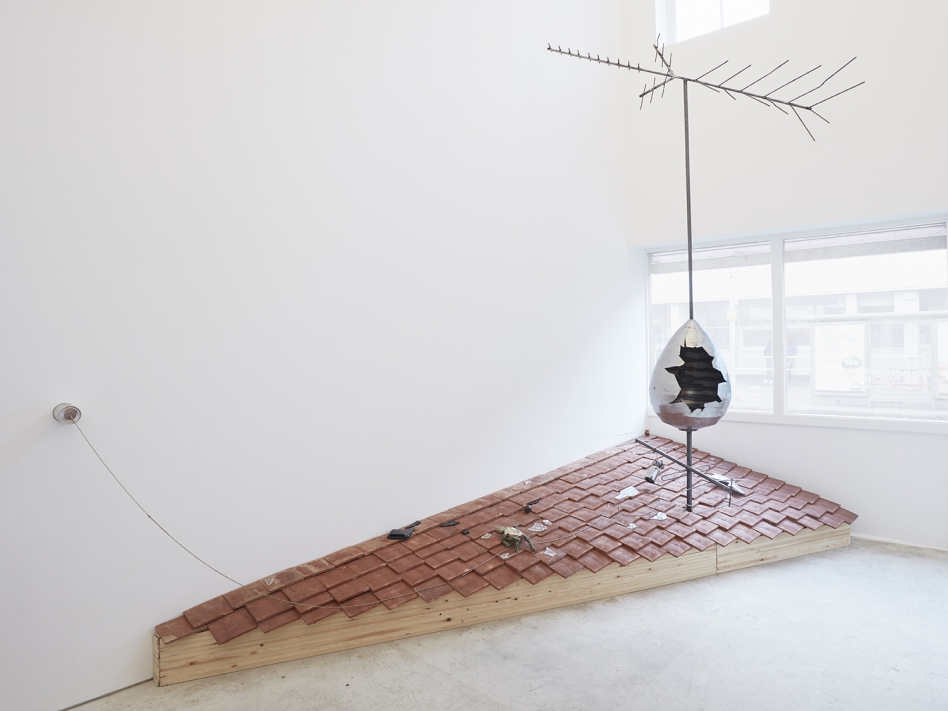
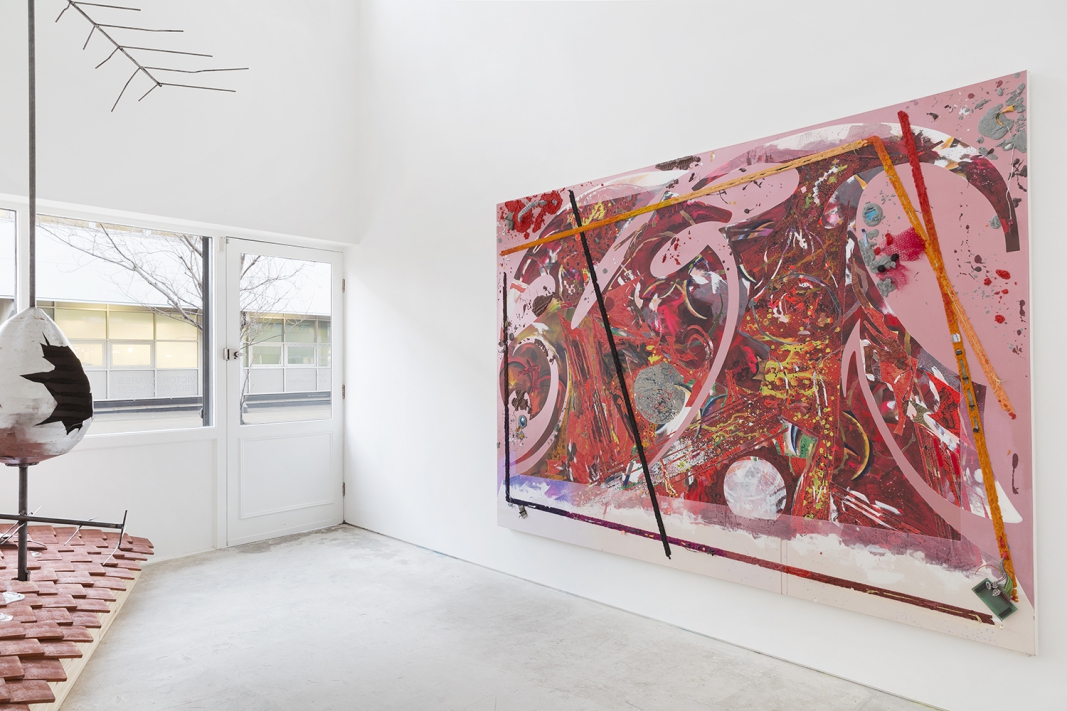
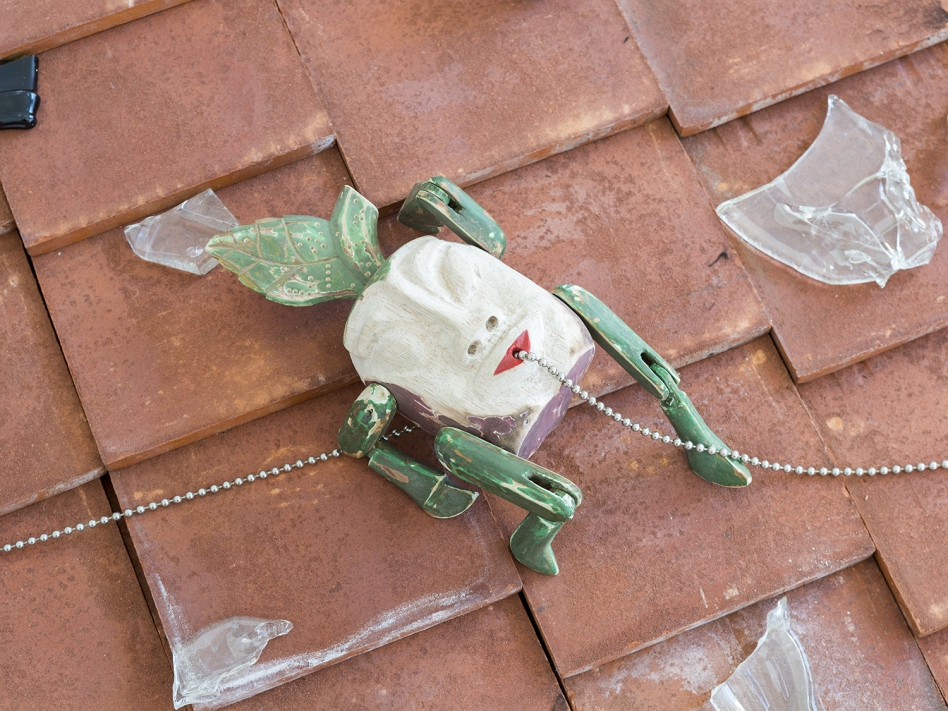
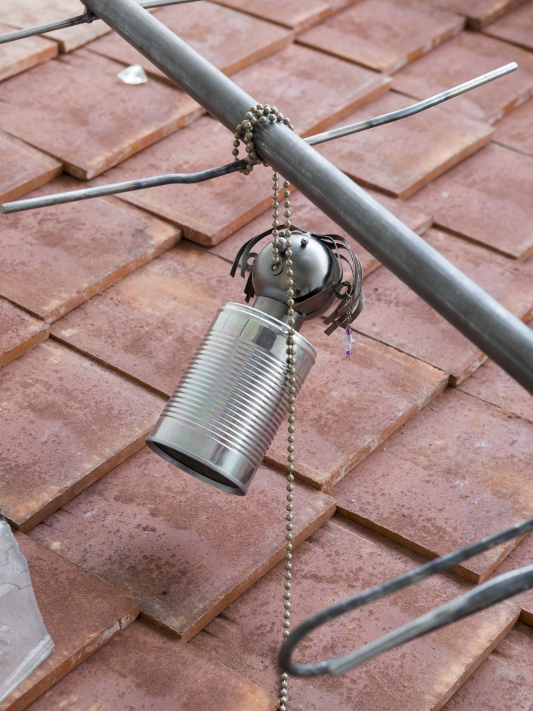
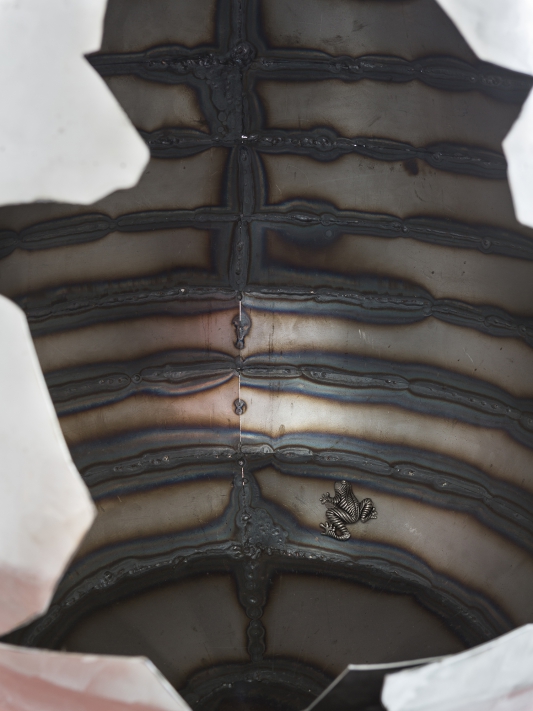
For his first solo exhibition at Roman Road, Cuban artist Victor Payares has been commissioned to create a site-specific installation that expands on his new investigation of exploring ways of simulating memories through his artistic practice. The show entitled Esol Parcheesi presents an immersive installation that narrates elements of a memory from the artist’s childhood during the Cuban ‘Special Period’.
Payares’ latest works materialise his recollections into new arrangements and convictions. During the ‘Special Period’ in Cuba there was not enough energy supply for the entire island, which resulted in frequent power outages lasting up to 16 hours. Payares recalls how he and his grandmother used to enjoy being able to see the stars so clearly when these outages occurred. In Esol Parcheesi, the artist conveys elements of this particular memory through a unique installation composed of three parts: a tiled roof, a 3.5 m antenna and a large-scale painting.
The tiled roof in the installation comprises two structures that have been elevated from the ground, mimicking a stage platform. The antenna, which protrudes from the roof’s surface, features a cracked eggshell and the contents of the egg, resembled by melted glass bottles, are scattered upon the rooftop. Mounted upon the opposite gallery wall is a large, vibrant painting by the artist based on the sun and moon phases. While the antenna and the ruptured egg connote ideas of heat and intensities concerning communication, a reference to the instability in his hometown at the time, Payares’ installation simultaneously can be seen as an invitation to perch on the roof and to gaze up at his painting, which channels his memory of an enjoyable childhood pastime.
Payares’ artistry is further inspired by elements of the everyday; he collects disregarded objects such as cables, clothing labels and trampled glasses found lying in the streets and repurposes them in his paintings. The migratory journey of objects and memories is an important part of Payares’ work and so is his choice of colour palettes, which are often intimately connected to his experiences.